#it was called the carolina parakeet and it was beautiful
Explore tagged Tumblr posts
Text
I just found out that the united states had a native parrot but bc humans suck it's extinct 😭
0 notes
Note
25. What is a weird, hyper-specific detail you know about one of your characters that is completely irrelevant to the story?
I tried, but I couldn't think of anything that fulfilled all of the criteria -- hyper-specific, about a character, and completely irrelevant. But I can make stabs at a few two-out-of-three examples when it comes to Price and Prey of Magic.
1: Hyper-specific and irrelevant, but not about a character: The parakeets mentioned as living around Eider's house are based on the Carolina parakeet, which is extinct. I found out that there used to be an east coast American parakeet as recently as 1918 and I was miffed I couldn't see them, so I put them in the book.
2: Hyper-specific and about a character: Yew's, Eider's, and Diarca's surnames are all significant. Yew Bosse is a reference to Carabosse, the evil fairy in Taichovsky's Sleeping Beauty ballet. My grandfather loved ballet and had a big coffee table book about the Bolshoi Ballet. I would page through it when I was little, so even though the name Carabosse isn't used in every telling, I associate it with the character. With Eider Isarna, Isarna is a root word for the English word "iron"; the book's original title was The Iron Claws. As for Diarca Talia, while most versions of the Sleeping Beauty story name the princess Aurora, one variant calls her Talia.
3: Hyper-specific, about a character, irrelevant to the story, but honestly not "weird": Eider's middle name is Clare, after her mother Claris.
Thanks for the asks!
4 notes
·
View notes
Text
A lot of the coolest and most beautiful birds weren't appreciated and were called "pests" unfortunately
it irritates me to no end when people say north american birds are dull in comparison to other countries’ birds
blue jay
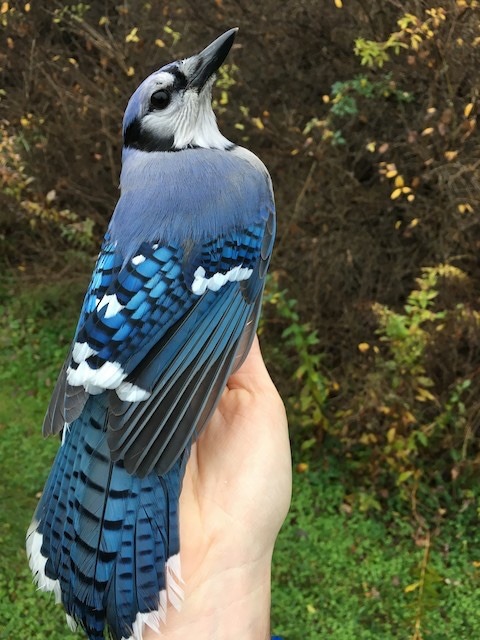
american kestrel
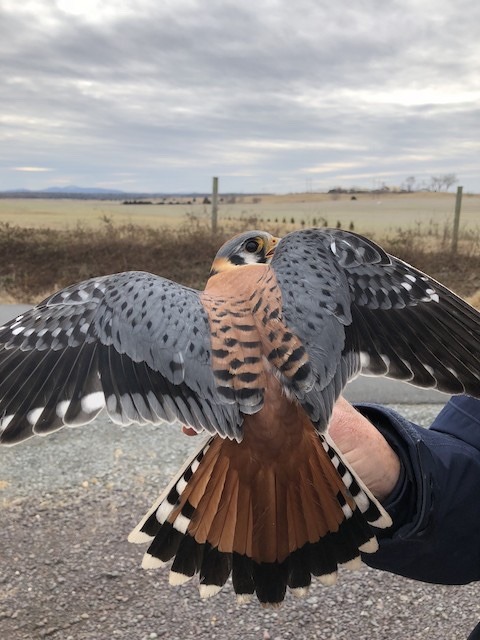
painted bunting

yellow-throated vireo
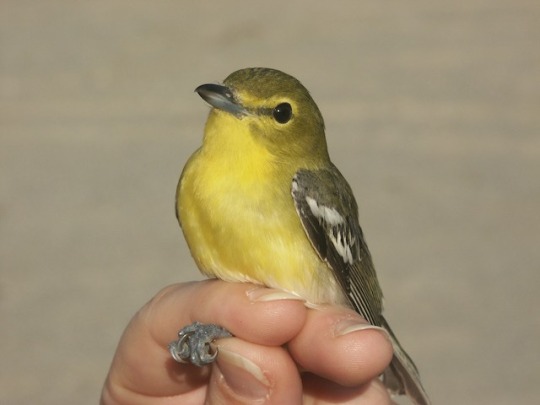
cerulean warbler
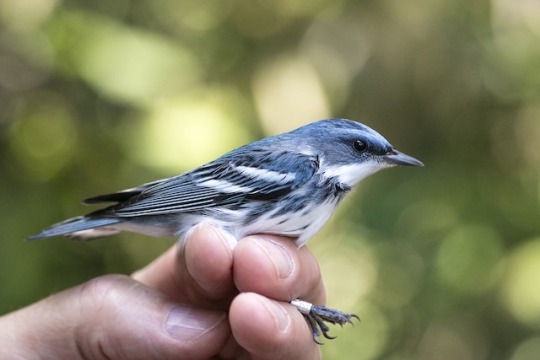
baltimore oriole
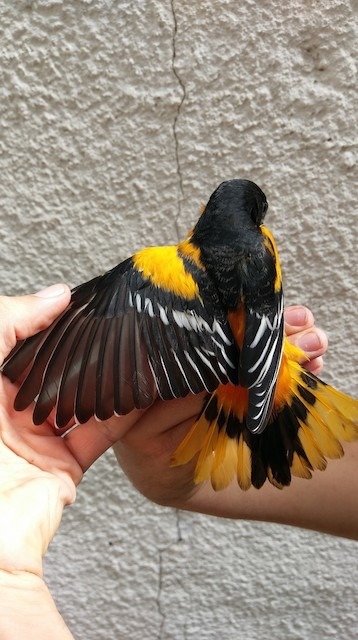

american goldfinch
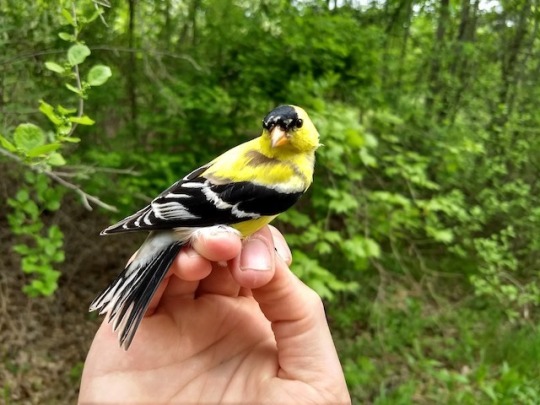
northern cardinal
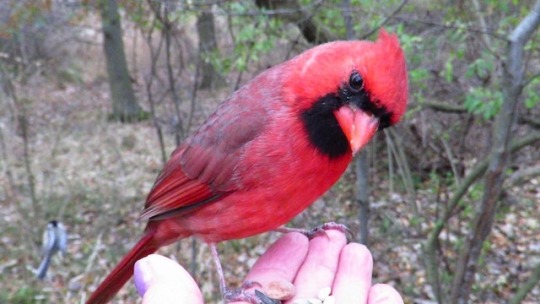
x
118K notes
·
View notes
Note
Seeing your posts about the Carolina parakeet made me think of an essay I read in Orion Magazine recently. It's called "Forever Gone" and it's on their main page if you're interested :)
Nice, thank you so much. I just finished reading this essay, after your recommendation. A very, very fitting recommendation for my interests, thank you.
‘Wishing for a contrived, humanless wildness forwards a practice of belittling — or ignoring altogether — “colored” land connection. My own dark-hued roots are mired in the soil of the American South. When I drive by, fly over, or walk through most places “down here,” I can see and often feel the actions of my ancestors who changed the land. By connecting the pain of that past to what we see now, I pay homage and deepen my personal connection with place. Yes, it’s an exorcism of past pain, but also a progression toward helping others see the land’s real history, and perhaps to become reconnected with the land. [...] Black ducks and black rails in “managed” rice impoundments are reminders of what was created by a cruel society on the backs of black people. We can’t separate one from the other.
Love that. (This essay was written by J. Drew Lanham, apparently a wildlife ecologist with interest in ecology of the American South, “songbird ecology ... and African American land ethic.”)
Thing I evangelize about: the complete interweaving of ecological degradation and human injustice; inseparability of ecological change and human death, both expressions of the same violence. And I really like how the author here used the parakeet as, like, a case study of exactly this: the inseparability of ecological and human violence. I also enjoyed how much they seemed to love the landscapes of the American South, and I liked how passionately they described the beauty of a cypress swamp. I like how they describe some of the bittersweet beauty of pastures, partially-degraded Southern landscapes, some native plants mingling with crops and monocultures, without idealizing the non-native plants and altered landscapes; just, some very nice descriptions of the region. Another of my interests they discussed: criticizing the problematique concept of “pristine untouched nature” and how it erases long Indigenous histories and local/traditional environmental knowledge.
But, the cherry on top, which I really appreciated: I like criticizing how “collection for science” is often performed carelessly, and constitutes a form of possession or entitlement, not entirely different from when anthropologists/botanists appropriate Indigenous knowledges, and so I love when people interested in ecology do the right thing and call-out the violence inherent in collecting practices, and I like when ecologists call-out other ecologists for lack of compassion. So I was happy when they said this: ‘Collectors — many of them obsessed hoarders — shot whole flocks for the sake of “science.” The museum bird that wouldn’t release me from its gaze likely fell in the name of “knowledge” and the need to possess a rare thing with no thought of its extinction.’
On the inseparability of ecology/environment and human/cultural institutions/injustice, liked this: ‘In the convergence of demands for human dignity and freedom, and nonhuman survival and existence, there are islands of empathy that emerge between our braided-river beings. Human trade and trafficking; genocide; driving other creatures to extinction — it is all built on a corrupt human belief that some are worthier than others.’
Another thing I really liked is how the author didn’t just focus on birds. Like, though the essay/story may have been mostly about parakeets, they referenced all the other interconnections, the other things that brought the parakeet’s realm to life: katydids at dusk, the cypress swamps.
And I liked the name-dropping mentions of multiple different famous swamp landscapes of the American South: ‘In the rendering of an old-growth, south-Georgia swamp forest, I could hear the sociable shrieks and jabbering of roosting flocks echoing from the hollow trunks of the buttressed bald cypress. [...] The parakeets flocked in and out of wilderness that exists now only in ragged remnants of parks and preserves. On the edge of the great swamps we now know by names like Congaree, Great Dismal, Black, Okeefenokee, Four Holes, and Kissimmee, and all along the great South Carolina swamps swollen to flooding by rivers like the Savannah, Edisto, Santee, Cumbahee, Black, Little and Great Pee Dee, Waccamaw, and Ashepoo, the birds screeched and wheeled in a unison.’
Especially this: ‘Do we readily reveal these chapters in history? Does conservation bear a responsibility to illuminate the dark corners where not only birds and beasts have suffered, but humans have as well’
“Ecology” as a “profession” or “science” or field of study doesn’t get to sit this one out and claim “objectivity,” a “scientist” in this case doesn’t get to ignore the historical context. “Ecology” necessarily involves directly grappling with those human institutions, violences, hierarchies. It’s not that “human activity affects the environment, obviously, therefore historical analysis is relevant to ecology,” It’s that ecology is human history, human history is ecology.
Thanks again! I’m glad I got the opportunity to read this. :)
34 notes
·
View notes
Note
Oh!! One of my favorite subjects is parrots!! There are many many parrots, cockatoos and cockatiels not being one of them! They are also located on most continents aside from North America, which is our own fault. The Carolina Parakeet (it looked a lot like a sun conure for reference) was considered a pest that ate crops in the 19th century so we killed them all off :( anyways, my favorite species comes from the amazon and are named as such (amazon parrots!) I amrunningoutofspacebuttyforlistenin
Ooo parrots are so wonderful. I went to a sanctuary for parrots once and this big blue one (I'm not sure what they're called but she was HUGE) named Lucy would fly around. They're so beautiful, thank you for sharing about the Carolina Parakeet. I love animal facts immensely
20 notes
·
View notes
Link
Essay by a “birder,” written to someone like me. I’ve never understood birders. I’m amazed at their dedication and obsession and get a kick out of listening to their intellectual spats about the identity of the bird that the birder just saw, or, better yet, didn’t see but heard. I also smile at their competitiveness.....who saw that bird first, who has seen or heard the most birds, and so on.
Excerpt:
Why? Why do we do this? By we, I mean bird watchers. Birders. Bird nerds. Those of us who go out of our way to catch, oftentimes, but a fleeting, distant peek at some feathered creature that most people in the world don’t know exists. And don’t care.
Closely allied to beauty and adventure is the sense of wonder—wonder and amazement at the miracle of so many tiny machines. Every spring I am simply gobsmacked at the return of various warblers and wrens and whatnot, knowing that they have traveled thousands of miles from their wintering grounds, as far south as the southern tip of South America, back to their breeding habitat in the Chicago region and beyond to the Arctic Circle.
For me, the sense of wonder I feel when I’m out watching birds stems as well from the living links they provide to our ancient past. To see a blue heron launch itself from a tree perch—all gangly and reptilian—is to be time-machined to the Mesozoic Era and experience a pterodactyl taking to the sky. Or, again, as Leopold reminds us, when we hear the clarion call of a sandhill crane, “we hear no mere bird. We hear the trumpet in the orchestra of evolution. He is the symbol of our untamable past, of that incredible sweep of millennia which underlies and conditions the daily affairs of birds and men.”
There are far fewer shrikes and meadowlarks and many other birds because of us. Passenger pigeons, Carolina parakeets, and many other species are extinct because of us.
We are the cause. We are also the salvation. And therein, too, lies my hope. My hope is in the growing number of professionals and volunteers who work hard to protect land and restore habitat, which birds and all plant and animal species need for their very survival. And, in truth, our own survival as well as our delight.
Already birds are returning with the spring. Hope fills the air. Look up. Listen. Lend a hand. The true resurrection is up to us.
13 notes
·
View notes
Text
Ode to joy
Of my memories of growing up, the ones that cling like moss to a live oak all harken back to my adventures in Florida’s backcountry. Mind you, I was born and raised in Jacksonville. But fate would have it that my older brother loathed the call of the wild.
Having reached puberty, he had no interest in humoring my dad by traipsing through the scrub, fishing fruitlessly in a leaky boat, baiting set hooks in the dead of night, or meandering dirt roads to visit fellow Crackers in some quiet, crossroads town where the only entertainment was a post office, a general store, a schoolhouse, a beer hall, and a church or two. My mother was similarly inclined to avoid such pursuits. By default, it became my job.
I abandoned any thought of becoming a girly-girl. The aspiration was too impractical. Had the traditional notion of a woman’s place prevailed, the utility my apprenticeship was, at best, doubtful. But my dad was having none of that. He was determined I would be well-versed in the minutia of what he reverently described as “Florida living.”
Instead of embroidery, I learned to thread worms on a hook. Instead of ballet, I learned to pirouette a cast and land a plug where a bass was helpless to resist. Instead of pummeling opponents in tennis, I learned to grand-slam a squirrel at 50 yards, skin it, gut it and cook it up real nice, too.
My closest pal was a girl my age who lived in the tiny community of Interlachen, east of Gainesville. She was the youngest of two sisters, the older of which, like my brother, disdained the great outdoors. I imagine our two father-hunter-gatherers commiserated on their mutual need for son-like companionship. Daughters would have to do.

Every summer, I stayed with my friend for weeks at a time. With one horse between us, we explored the vastness of the surrounding scrub. We drank from artesian wells, fished hidden lakes, paddled across watery prairies, and picked oranges in abandoned groves.
“Florida living,” deeply ingrained itself in me. And like most Floridians for whom these memories resonate, I didn’t realize this version of Florida had gone missing until it had almost disappeared. Still, there are places evocative of by-gone Cracker life: The Cross Creek farmstead of Pulitzer Prize-winning author and novelist, Marjorie Kinnan Rawlings is one. It is on the National Registry of Historic Places and designated as a Florida State Historical Park.
Rawlings bought the 76-acre farmstead and orange grove with her husband in 1928. He went the way of the Carolina parakeet, but Rawlings dug in. She wrenched a living out of the place, using the backcountry to augment her pantry while doggedly pursuing her success as an author. It took her ten years to find her voice as a writer. She found it in her own backyard, chronicling Florida living, Cracker-style, most famously, in the American classic “The Yearling,” published in 1938. Other memorable novels and expositions include “Cross Creek” and “Cross Creek Cookery,” two of my favorites. This year is the 75th anniversary of their publication.
Like so many others, Rawlings was a Florida transplant. A northerner by birth, she visited here, liked what she saw, and stayed. The root might not have taken but for her friendship with Dessie Smith Prescott.
Prescott was a Floridian by birth and the epitome of a genuine, Cracker pioneer woman.
She was orphaned as a young girl in the flu epidemic in 1918 and survived living by her wits and off the land in the backwoods of Alachua County. She earned a reputation as a “gritty native sportswoman who could shoot, hunt and fish as well as men”—at the time, quite an admission.
She sold cars, flew planes, and ran a business guiding fishing and hunting expeditions deep into Florida’s backcountry. It was Prescott who got Rawlings up to speed in the arts of hunting and fishing, educating her about Florida’s wild. Rawlings wrote about Prescott and their adventures together in her autobiography, “Cross Creek.”
These women immortalized Cracker life in the state’s history. Both were inducted into the Florida Women’s Hall of Fame, in 1986 and 1999, respectively.
My own memories of Florida living and the lives of Rawlings and Prescott are an ode to joy. When the world goes awry, as it surely has now, we need the touchstone of places and memories that still deeply matter in a fundamental way.
Wendell Berry, a Kentucky farmer, poet, and environmentalist, wrote a poem expressing this longing for spiritual solace when the despair for the world grows too large within us.
At such times, he writes, “I go and lie down where the wood drake rests in his beauty on the water, and the great heron feeds. I come into the peace of wild things who do not tax their lives with forethought of grief. I come into the presence of still water. And I feel above me the day-blind stars waiting with their light. For a time, I rest in the grace of the world, and am free.”
Exactly.
#Floridaliving #FloridaWeekly #CrossCreek #MarjorieKinnanRawlings
0 notes
Text
11 Most Expensive And Rarest Books In The World You Should Know
“Wherever there are books to be hunted is heaven for the bibliophile and doubly heaven in that his territories are in themselves beautiful to be remembered many years after with singular delight.” ~ Holbrook Jackson
Today I am going to share with you the most expensive and rarest books in the world. These books are the master pieces of their creators. Book is the real best friend of a person. A reader never gets bore because he/she has the best time pass, the book. Books are the instant connection between the writer and reader. Millions and trillions of books are present in the world. A book is the most important thing in everyone’s life. Through books, one can makes up his/her life. Carl Sagan once said that ‘books can break the shackles of time’.
Also See :-7 Best Libraries In The World For Book Lovers
Everyone is not capable of writing a book. There are some special people in the world which we call ‘writers’ are capable to write books. Book can be on any topic. Although there are a lot of books present around us but we always get curious about the things we don’t have. There are some books in the world which are very rare, most expensive and best ones. So, here are the 11 most rarest books in the world.
11 RAREST BOOKS IN THE WORLD YOU SHOULD KNOW
1- The Gutenberg Bible
The Gutenberg Bible is also known as ‘the Mazarin bible’ and ‘the 42-line bible’. It was the first major book ever printed in the press. Gutenberg bible was widely praised throughout the world for its artistic qualities and high aesthetic. This book marked the beginning of the ‘Gutenberg revolution’. It was written in Latin and has an ionic status. Catholic Gutenberg bible was printed by Johannes Gutenberg in Mainz (in present day Germany) in 1940’s. Total 49 copies of the world along with some portions of the copies survived in the world. Gutenberg bible was considered as the moat valuable book ever existed. No complete copy of the book was sold since 1978. This bible was not Gutenberg’s first work but the one from which he got fame.
Gutenberg bible was described as the most beautiful ever printed. The printing, quality of ink and other material was noted. One complete copy of Gutenberg bible has 1,286 pages. The handmade paper was used for this book which was imported from Italy by Gutenberg. It was one of the most expensive book of its time which are unaffordable for people with ordinary income.
2- The Book Of Urizen
It is one of the major prophetic books of William Blake, an English writer. In 1794, the first book of Urizen was published by Blake’s own pates. The book got its name from Urizen which is present in Blake’s mythology. In this book, Urizen is described as the ‘primeaval priest’ and the readers are told how he created his own alienated and enslaving realm of religious dogma by separating from other eternals. The book of Urizen is the parody of ‘The Book of Genesis’. This book was described as the illuminated printing by Blake. The Book of Urizen was published from 1794 until 1818 and all the surviving copies of the book were coloured. Only eight complete copied were printed.
“Here alone I, in books form’d of metals,
Have written the secrets of Wisdom,
The secrets of dark Contemplation,
By fightings and conflicts dire
With terrible monsters sin-bred,
Which the bosoms of all inhabit—
Seven deadly Sins of the Soul.”
William Blake (1757–1827)
One of the copy of ‘The Book oF Urizen’ was sold for US $2.5 million in the year 1999. It is one of the most rarest book with grand philosophical themes personified as monsters, folkloric characters and angels. William Blake described it as a mythic adventure about the perils of alienated person.
3- The Codex of Leicester
The codex of Leicester is also known as Codex Hammers. It is the part of the large collection of scientific writings by Leonardo da Vinci. The book was named after Thomas Coke. Out of Leonardo’s 30 scientific journals, the codex is the best and famous one. It has the record for the sale price. The codex of Leicester was sold in auction house to Bill Gates for US $30,802,500. The genre of the book is hand written and it was published in 1510. The total pages of the journal are 72 and it is the best book for understanding the creativity of science and the scientific processes.
The codex of Leicester has not a single linear script but it is the mixture of the writer’s theories and observations. He presented his theories on astronomy, fossils and moon in his book. It was handwritten in Italian. The codex of Leicester is among the rarest books ever existed in the world.
4- The Birds of America
This book was written by a naturalist and painter John James Audubon. In this book,the birds of different varieties are illustrated. This book was published as a series in 1827 to 1838 in Edinburgh, London. Hand-coloured paintings of birds are present in the world. There are images of six extinct birds ; passenger pigeon, Carolina parakeet, Eskimo curlew, great auk, Labrador duck, and pinnate grouse inside the book.
The original edition of ‘the birds of America’ was printed in a hand-written form. Later, the four volumes of the birds of America were published and the famous libraries of the world hosted “Audubon day”. It is the most rarest series of books and this is the reason why is it so expensive.
5- First edition of Don Quixote
It is the Spanish novel which was written by Miguel de Cervantes Saavedra. The full title of the novel is “El ingenioso hidalgo don Quijote de la Mancha” and in English “ The Ingenious Gentleman Don Quixote of La Mancha”. It was published into two volumes in 1605 and 1615. In the entire Spanish literary canon, Don Quixote was considered as one of the most influential work of literature. The writer got fame from this novel in the Spanish golden age. Don Quixote was high on the lists of greatest fiction works ever published. It was said that this novel was the best literary work ever written by someone.
Don Quixote was written in Spanish language by publisher ‘Francisco de Robles’. It was considered as the first modern novel by Harold Bloom. He said that this novel represents radical nihilism and anarchy. Later, Don Quixote was translated by Edith Grossman in 2003. The structure of the novel is episodic in form. It was written in the late 16th century in picaresco style. Don Quixote is among the rarest books of the world and is interpreted as comic novel.
6- Ptolemy’s Geographia Cosmographia
It is an atlas, a gazetteer and a treatise in which the geographical knowledge of the second century Roman Empire is compiled. It was written by Ptolemy in Alexandria around A.D 150. The language in which the book was written is Greek. It was translated into Arabic in the 9th century and in 1406, it was translated into Latin.
Ptolemy’s Geographia Cosmographia was highly influential on the geographical knowledge. Ptolemy was the moat influential thinker of his time and he got fame from his masterpiece “Geographia Cosmographia”. It is the moat expensive book in the world and due to its fame, it is considered as the most rarest book in the world.
7- Da Revolutionibus Orbium Coelestium
This book was first printed in 1543 in Nuremberg, Holy Roman Empire. The English name of the book is ‘On the revolutions of the heavenly spheres’. This book is based on the heliocentric theory of the renaissance by an astronomer Nicolaus Copernicus. The model present in the book was widely accepted since ancient times. The publisher of ‘De revolutionibus Orbium Coelestium’ was Johannes Petreius in 1543. It is divided into six different parts.
This book was described as ‘the book of nobody read’ by Arthur Koestler. It was reprinted four times and was an all time worst seller. C.G. Wallis, Annapolis translated “On the revolutions of the heavenly spheres” in year 1939. This book was not banned formally but its circulation was withdrawn. This is the reason, it is among the rarest books of the world and many readers are curious about reading the theories present in the book.
8- The Tales of Beedle the Bard
It is the children’s story book written by British author J.K. Rowling. There is a story book of the same name in ‘Harry Potter and the deathly hallows’, in the last book of Harry Potter series. It is a fantasy book published by Children’s high level group on 4 December, 2008. Only seven limited copies of the book were published in a handwritten form. One copy of the book was sell for $3 million by Amazon. The money which was earned by selling the book was donated to the charity campaign, “The Children’s Voice”.
Also See:- 17 CLASSIC CHILDREN’S BOOKS FOR ALL GENERATIONS
The tales of Beedle the Bard is described as an ancient looking small sized book with its stained and peeling binding. The title of the book is written in embossed runic symbols. All the copies of the book were illustrated by the writer himself. The tales of beedle and bard has been translated into 28 different languages. As this book was published in lesser amount, that’s why it is among the rarest books.
9- Shakespeare’s First Folio
The comedies, histories and tragedies of Mr. William Shakespeare were published in the form of plays which was commonly referred as the “First Folio” by modern scholars. The publisher of this book were Edward Blount and William and Isaac Jaggard in late 1623. Its total pages are 630 and the format in which the book was printed is folio format. This folio contains 36 plays.
The contents of the Shakespeare’s first folio were compiled by Heminges and Condell who were members of stationers company. It is among the best work of Shakespeare. Only few copies of the first folio were printed that’s why it is not very common and the rarest book in the world.
10- Institutes of the Christian Religion
It is the rarest seminal work of John Calvin. Institutes of the Christian religion is based on the protestant systematic theology and is the most influential book in the western world. This book was published in 1536 in Latin language and it is still read throughout the world by theological students. This book covers a broader range of theological topics from different doctrine of church and sacraments.
Institutes of the christian religion is highly regarded secondary reference for Calvinism. The book was translated five times in English and Latin. The book explores both the ‘knowledge of God and ourselves’. It is the most popular book in the world and this is the reason every reader wants to read it and every library wants to have this book.
11- A Season in Hell
“Une Saison en Enfer” is an extended poem written by French writer Arthur Rimbaud in 1873. A season in Hell was the only work of Rimbaud which he himself published. This book is the most influential book of his time. Arthur Rimbaud started working on this poem during a visit to his family’s farm which is present near Charleville and finished the work in his farmhouse in Roche, Ardennes. This poem is divided into nine different parts which are of different sizes.
A Season in Hell is a terribly enigmatic poem. It is brilliantly near-hysterical quarrel between the poet and his other. The poet identifies two voices in his poem. One is widely in love with childhood and miracles of light while the other finds all these literary shenanigans. This poem is quoted in many novels i.e. “Ghosts of Watt O’Hugh”. It is the most famous poem ever published. This is the reason many authors have given the titles to their books from the lines present in the poem.
Every book is beautiful and informative but there are some books in the world which are not comparable to others. These books are the best ones of their times. It is the nature of humans that they always wants to get best. That’s why the best books are always in lesser amount because everyone wants to get them and they become rare.
The post 11 Most Expensive And Rarest Books In The World You Should Know appeared first on Valor Zone.
from 11 Most Expensive And Rarest Books In The World You Should Know
0 notes